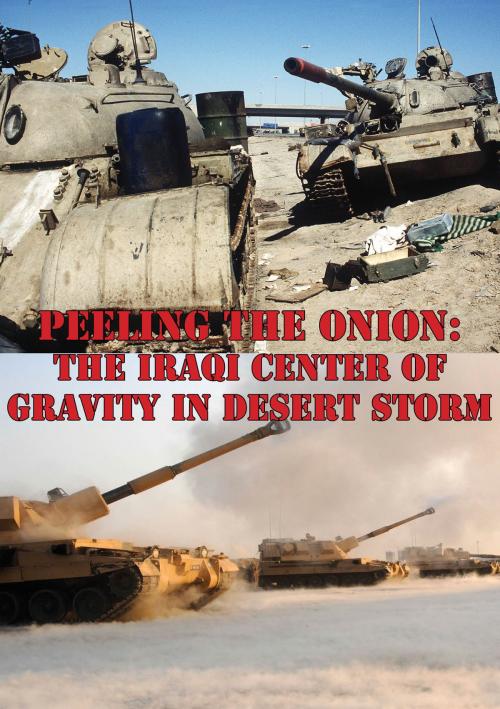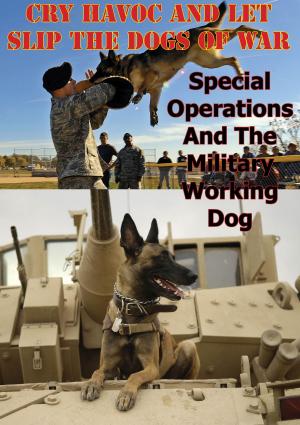Peeling The Onion: The Iraqi Center Of Gravity In Desert Storm
Nonfiction, History, Middle East, Persian Gulf War, Military| Author: | Major Collin A. Agee | ISBN: | 9781782896609 |
| Publisher: | Tannenberg Publishing | Publication: | August 15, 2014 |
| Imprint: | Tannenberg Publishing | Language: | English |
| Author: | Major Collin A. Agee |
| ISBN: | 9781782896609 |
| Publisher: | Tannenberg Publishing |
| Publication: | August 15, 2014 |
| Imprint: | Tannenberg Publishing |
| Language: | English |
This monograph examines the concept “center of gravity” as applied by coalition forces during Operation Desert Storm. Center of gravity is an integral part of operational art and figures prominently in current U.S. doctrine.
It begins by tracing the concept’s inception in Clausewitz’s On War, finding several competing definitions in various sections of that landmark work. Current U.S. doctrine reveals that time has done little to alleviate the confusion. The U.S. Army definition of center of gravity as a strength is significantly and irreconcilably different from the Marine Corps’ treatment as a weakness. The Air Force offers yet another slant.
Given those inconsistent definitions, it is little wonder that various participants and analysts suggest differing centers of gravity during Desert Storm. From various sources, the monograph compiles a list of a dozen contenders for the title “Iraqi Center of Gravity.” It next examines coalition planning and actual combat action in search of a de facto center of gravity, concluding that the Republican Guard was the true Iraqi center.
The monograph then suggests The Onion Model as a unifying representation of the concept. Adding the terms Protectors, Connectors and Sustainers to the Center of Gravity, it graphically portrays the relationship of the other eleven contenders to the true center of gravity.
The study concludes that the center of gravity remains a valuable, if misused, concept. In Desert Storm, this misapplication of doctrine was overcome by an abundance of combat power; the center was hit because everything was attacked. In the future, U.S. forces may not enjoy the same luxury of time and resources. A future doctrine based on overwhelming force must be tempered by the Law of War’s requirements for military necessity, proportionality, and avoidance of unnecessary suffering.
This monograph examines the concept “center of gravity” as applied by coalition forces during Operation Desert Storm. Center of gravity is an integral part of operational art and figures prominently in current U.S. doctrine.
It begins by tracing the concept’s inception in Clausewitz’s On War, finding several competing definitions in various sections of that landmark work. Current U.S. doctrine reveals that time has done little to alleviate the confusion. The U.S. Army definition of center of gravity as a strength is significantly and irreconcilably different from the Marine Corps’ treatment as a weakness. The Air Force offers yet another slant.
Given those inconsistent definitions, it is little wonder that various participants and analysts suggest differing centers of gravity during Desert Storm. From various sources, the monograph compiles a list of a dozen contenders for the title “Iraqi Center of Gravity.” It next examines coalition planning and actual combat action in search of a de facto center of gravity, concluding that the Republican Guard was the true Iraqi center.
The monograph then suggests The Onion Model as a unifying representation of the concept. Adding the terms Protectors, Connectors and Sustainers to the Center of Gravity, it graphically portrays the relationship of the other eleven contenders to the true center of gravity.
The study concludes that the center of gravity remains a valuable, if misused, concept. In Desert Storm, this misapplication of doctrine was overcome by an abundance of combat power; the center was hit because everything was attacked. In the future, U.S. forces may not enjoy the same luxury of time and resources. A future doctrine based on overwhelming force must be tempered by the Law of War’s requirements for military necessity, proportionality, and avoidance of unnecessary suffering.




![Cover of the book Enemy Coast Ahead [Illustrated Edition] by Major Collin A. Agee](https://www.kuoky.com/images/2015/november/300x300/9781786257574-db24_300x.jpg)



![Cover of the book Weapon Of Denial: Air Power And The Battle For New Guinea [Illustrated Edition] by Major Collin A. Agee](https://www.kuoky.com/images/2014/august/300x300/9781782898887-S21c_300x.jpg)


![Cover of the book Operation Thursday: Birth Of The Air Commandos [Illustrated Edition] by Major Collin A. Agee](https://www.kuoky.com/images/2015/november/300x300/9781786252494-RzRY_300x.jpg)

![Cover of the book The High Road To Tokyo Bay — The AAF In The Asiatic-Pacific Theater [Illustrated Edition] by Major Collin A. Agee](https://www.kuoky.com/images/2014/august/300x300/9781782898917-2fPd_300x.jpg)
![Cover of the book American Airpower Comes Of Age—General Henry H. “Hap” Arnold’s World War II Diaries Vol. I [Illustrated Edition] by Major Collin A. Agee](https://www.kuoky.com/images/2015/november/300x300/9781786251510-UqO5_300x.jpg)
